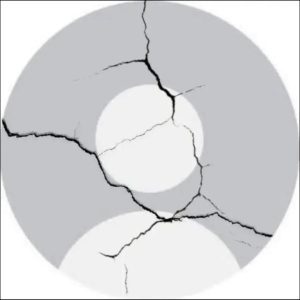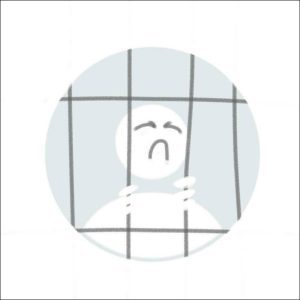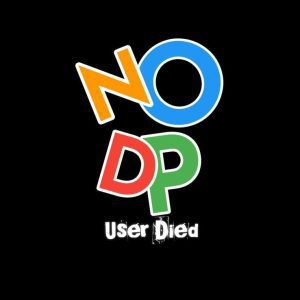A No DP pic refers to a profile without a display picture on platforms like WhatsApp, Instagram, or other social media. While most users opt for a profile picture to represent themselves online, some choose to remain anonymous or keep a minimalist profile.
The absence of a DP can be interpreted in various ways, often sparking curiosity or raising questions. It can symbolize a desire for privacy, personal choice, or a statement about one’s online presence. Understanding the significance of No DP pics is important in comprehending how digital personas are shaped and how people engage with technology in an increasingly connected world.
Content
- 1 The Significance of Not Having a DP Picture
- 2 Reasons Why People Choose Not to Set a DP
- 3 How No DP Pic Affects Your Online Presence
- 4 Cultural and Social Implications of Having No DP
- 5 How to Handle Questions About Not Having a DP
- 6 When Is It Appropriate to Not Have a DP
- 7 Impact of No DP on Messaging Apps and Social Media Platforms
- 8 Alternatives to Not Having a DP: Privacy Settings and Options
- 9 How No DP Can Affect Personal or Professional Relationships
- 10 Psychological Reasons Behind Choosing to Have No DP
- 11 Tips for Managing Your Online Identity Without a DP
- 12 Frequently Asked Questions About No DP Pic
- 13 Conclusion of No DP Pic
The Significance of Not Having a DP Picture
Not having a DP picture can carry significant meaning in the digital age. In a world where online profiles are an extension of one’s identity, the absence of a photo may suggest a desire for privacy or anonymity. It can also signal a conscious choice to avoid drawing attention or simply to maintain a low profile.

In some cases, not having a DP can be a statement of rejecting the pressure to conform to social media norms or a deliberate effort to separate online and offline identities. A No DP pic can therefore be as telling as one with a carefully selected image, reflecting personal preferences and values.
Reasons Why People Choose Not to Set a DP
There are several reasons why people opt for a No DP pic. Privacy concerns are a primary reason, as some individuals prefer not to share their images online for fear of identity theft or unwanted attention. Others may choose to keep their profile minimal or anonymous, especially on platforms where they don’t want their personal life to be public.

Some people simply dislike being the center of attention or may not feel comfortable sharing their image with others. Additionally, some use the absence of a DP as a form of self-expression, rejecting the idea that a profile photo is necessary for a valid digital presence.
How No DP Pic Affects Your Online Presence
A No DP pic can have a noticeable effect on your online presence. While some view it as a bold choice for privacy, it can also create a sense of mystery or detachment. On social media platforms, not having a profile picture may limit your ability to engage or connect with others, as many users associate a photo with trust and authenticity.

In professional environments, a No DP can potentially impact perceptions of credibility or approachability. Conversely, it may convey an image of someone who values personal boundaries or prefers to keep a low-key profile. Ultimately, the effect depends on how others interpret your decision to not have a DP.
Cultural and Social Implications of Having No DP
The choice to have a No DP pic can carry cultural and social implications depending on the society and platform in question. In some cultures, having a DP is almost expected, with the absence of a photo signaling aloofness, disinterest, or even suspicion.

In contrast, in more privacy-conscious or minimalist cultures, not having a profile picture is perfectly acceptable and may even be seen as a sign of respect for personal space. Socially, it can impact how others perceive you, especially in spaces where visibility and social interaction are key. Whether it’s viewed as an act of rebellion, self-care, or indifference, the No DP pic can influence how individuals are perceived within online communities.
How to Handle Questions About Not Having a DP
When others question your choice of not having a DP, it’s important to handle it with confidence and clarity. You might explain that you value your privacy, or simply prefer to remain anonymous online. For some, the No DP pic is a personal preference or a way of separating their online identity from their real-life persona.

You could also highlight that it’s not a reflection of how you engage with others or that you’re just taking a break from social media conventions. Responding openly yet respectfully can help others understand your reasoning and create space for different choices in online presence without judgment.
When Is It Appropriate to Not Have a DP
Not having a DP may be appropriate in various situations. For instance, on work-related platforms like LinkedIn, some individuals may opt for a minimalist approach, preferring not to display a photo. Privacy-conscious users might choose to leave their DP empty to avoid revealing personal information or to prevent being found by strangers.

In environments where the primary focus is professionalism, like on email platforms or forums, a No DP might be seen as a deliberate and professional choice. In social groups where images are less important than textual interaction, skipping the DP can signal that personality doesn’t need to be defined by a visual representation.
Impact of No DP on Messaging Apps and Social Media Platforms
On messaging apps and social media platforms, having a No DP pic can influence how others interact with you. In messaging apps like WhatsApp, not having a profile picture might result in fewer connections, as users often rely on profile photos for trust-building. On platforms like Facebook or Instagram, it could limit engagement or make you seem less accessible.

In professional settings, such as LinkedIn, a No DP could be seen as a lack of professionalism. However, some users may appreciate the choice, as it could indicate a preference for privacy or a rejection of the social media-driven culture of image. The impact depends largely on the context and the community’s values.
Alternatives to Not Having a DP: Privacy Settings and Options
If you prefer not to have a DP pic, there are privacy settings and options that allow you to manage your online presence without compromising your privacy. Many platforms, like WhatsApp and Instagram, offer the option to set a default image or leave your profile picture blank.

You can also adjust visibility settings to control who can see your profile photo—for example, limiting it to contacts only or blocking certain users from viewing it. Another option is to choose a generic image or an abstract design that doesn’t reveal personal details but still maintains an active profile. These alternatives ensure you maintain privacy while engaging with social platforms.
How No DP Can Affect Personal or Professional Relationships
Having a No DP pic can influence both personal and professional relationships in various ways. In personal relationships, some may interpret the absence of a profile photo as a sign of detachment or lack of engagement, while others may respect it as a privacy choice.

In professional settings, such as on LinkedIn, not having a DP might create an impression of incompleteness or unprofessionalism, as profile pictures often enhance credibility and approachability. However, some may appreciate the choice, viewing it as a statement of privacy or minimalism. Ultimately, the effect on relationships depends on how trust and identity are perceived within the context of the platform.
Psychological Reasons Behind Choosing to Have No DP
The decision to avoid having a DP can stem from several psychological reasons. For some individuals, privacy is a significant factor, as they prefer to keep their identity hidden or are concerned about the risks of online visibility. Others might reject the pressure to conform to social media norms and avoid the sense of being judged based on appearances.

Some may have social anxiety and feel more comfortable not showcasing their image online. Additionally, the No DP choice can reflect a desire for self-preservation, where an individual wants to separate their digital life from their real-life interactions. This can be a form of mental protection in the digital age.
Tips for Managing Your Online Identity Without a DP
Managing your online identity without a DP requires a thoughtful approach. First, consider adjusting your privacy settings to control who can view your profile details. You can also curate your bio carefully to reflect your personality and provide context for those who interact with you.

Use username choices or a stylized text-based profile to express yourself creatively. In professional environments, consider using generic images or logos that don’t compromise your identity but still offer visual engagement. Be mindful of the platform’s culture—on some platforms, a No DP might seem less engaged, while on others, it may be seen as a respectable choice for privacy. Regularly assess how you’re perceived online.
Frequently Asked Questions About No DP Pic
Why do people choose not to have a DP?
People often avoid setting a DP for reasons like privacy concerns, anonymity, or simply a preference to not share their image. It can be an act of self-expression or a way to separate personal life from the digital world.
Does not having a DP affect your social life?
Yes, a No DP can influence how others perceive you. It may be interpreted as distant or introverted, but it can also convey a sense of privacy or minimalism depending on the context.
Is it unprofessional to have no DP on LinkedIn?
On LinkedIn, not having a profile picture might be seen as unprofessional by some. However, others may respect it as a choice for privacy. If you do not wish to share an image, consider a generic professional image or logo instead.
Conclusion of No DP Pic
The decision to opt for a No DP pic can be a personal choice driven by various psychological, cultural, and privacy reasons. While it can affect how you’re perceived on social media and messaging apps, it also allows for greater control over your online identity.
Whether it’s to protect privacy, maintain anonymity, or reject societal pressures, not having a DP can be a form of self-expression. Understanding its impact on both personal and professional relationships helps you navigate the digital world with confidence, while also ensuring your digital footprint reflects your personal values and preferences.